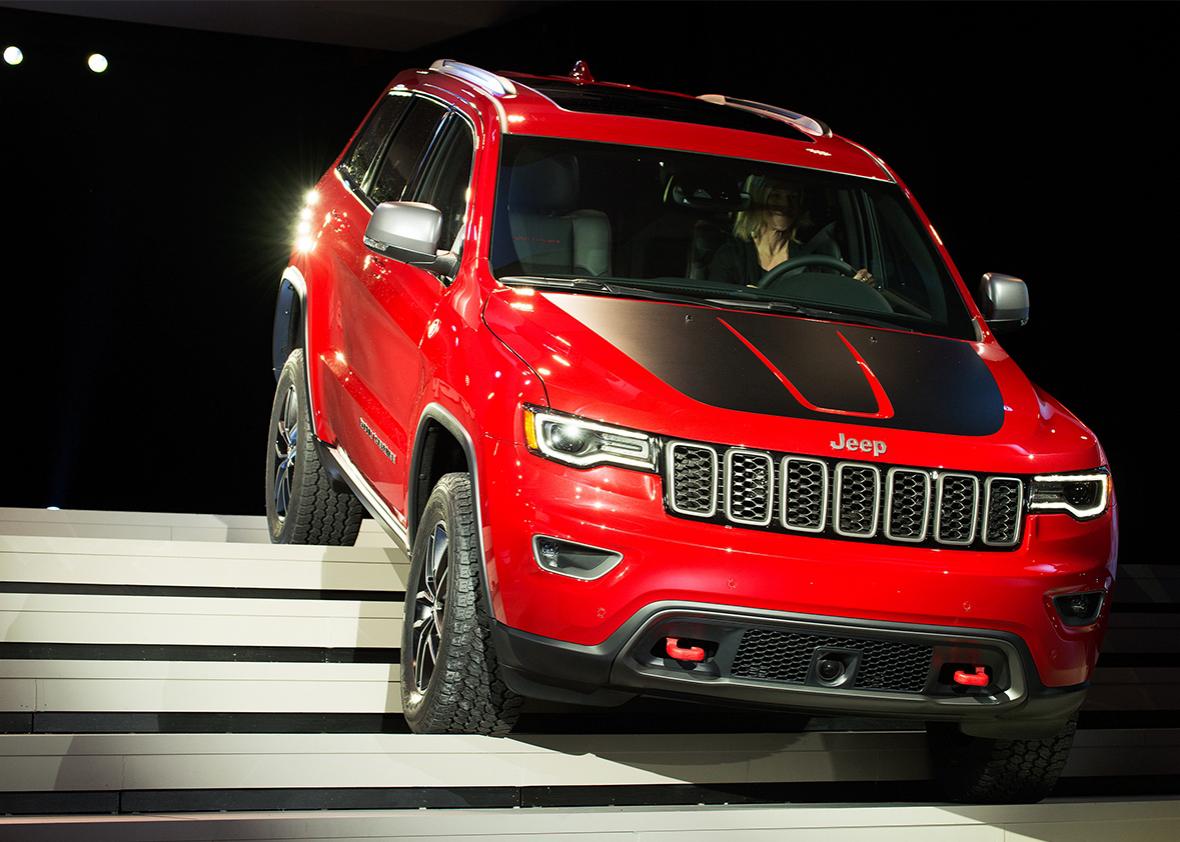When it comes to fuel efficiency, America seems to have taken a few steps backward. As prices at the pump have fallen, consumers have stopped prioritizing vehicles that use less gas. So far this year, sales of light-duty trucks like pick-ups and SUVs are up 9.8 percent from 2015, while sales of cars are down 4.1 percent. Sales of hybrids have fallen sharply. In February, the typical new car sold in the U.S. got 25.2 miles per gallon, a noticeable regression from the 2014 peak. Even though Tesla started taking reservations on its Model 3 this week, the true mainstreaming of the electric vehicle seems to be years away.
Whatever the numbers say, the high-efficiency future of the auto industry is already here. And you don’t have to go to a Prius factory in Japan to see it. Just trek over to the far West Side of Manhattan and pay $16 for a ticket to the New York International Auto Show.
There, amid the glitz and bustle, underneath the cheesy patter of spokesmodels and hosts, this future was impossible to miss. There were two fuel-cell vehicles—cars that run on hydrogen and whose sole emission is water vapor. One, the Toyota Mirai, is already available in extremely limited numbers in California. The second, the Clarify Fuel Cell from Honda, will be out later this year.
It’s easy to forget that a decade ago, analysts regarded the hybrid offerings of Toyota and Honda with the same skepticism with which they now regard fuel-cell vehicles: too expensive, too weird, too niche. And yet hybridization and electrification are now definite things. Everywhere you look at the auto show, there are cars connected to faux charging stations, at every price point and from every country: the Porsche Panamera S-E Hybrid, a BMW plug-in SUV, Smart coupes, pedestrian Honda and Nissan sedans, and a half-dozen varieties of Prius. Hybrids and plug-in hybrids are not standard by any means. But it is becoming standard for companies to offer hybrids, more powerful batteries, and cars that run in part or entirely on electricity. Chevrolet is still pushing the Volt, the 20167 version of which it says can go up to 53 miles on an electric battery before switching over to gas.* But it gave a prominent place to an ochre-colored Bolt—the zippy new compact that will be able to go 200 miles on a single charge.
Automakers are complaining that the low price of gasoline will make it exceedingly difficult to meet the ambitious mileage standards that the EPA has set forth—by 2025, the average car is supposed to get 54.5 miles per gallon. The conventional wisdom has held that only a few models of so-called “compliance cars”—vehicles produced and sold at a loss just for the sake of meeting high mileage standards—will be able to meet the standard. And yet at the auto show there were vehicles—actual cars that will be available in the coming months, that people might want to buy—that meet or exceed that standard, like the 2017 Toyota Prius Prime. There’s also Elio, a startup that makes two-seated, three-wheeled cars (which I ran into while biking in New York a few years ago). Executives told me last week that they’ve received 50,000 pre-orders for the little car, which gets 84 miles per gallon and costs about $7,000.
But just as heartening were the more banal, less obvious signs of progress, the recurring springtime signs that the American auto industry, essentially dead seven years ago, has reinvented itself and is continuously making its products more relevant and efficient. Here was the Ford F-150 pick-up truck, nearly two years into the successful experiment to replace steel with aluminum, thereby reducing weight and increasing mileage. I always make a point to check in on the latest version of the Jeep Grand Cherokee. I have a 2008 model, which gets truly pathetic gas mileage—about 13 miles per gallon in the city, 19 on the highway, and 15 combined.
Over the past several years, Jeep-parent Chrysler has emerged from bankruptcy and set to work in earnest on making its flagship vehicle more efficient—through the use of new materials and design, and by developing a nine-speed transmission. And all while barely increasing the price. This year, Jeep representatives matter-of-factly noted that there is a version rated at 22 miles per gallon in the city, 31 on the highway, and 25 combined.
The auto show may lead with disruptive innovation and glitzy futuristic vehicles. But the future of the industry is most evident in such signs of incremental progress. Even a plummet in gas prices can’t stop that wheel from turning.
*Correction, April 6, 2016: This article originally misstated that the Chevrolet Volt can go about 30 miles on its electric battery. The 2017 version has a battery range of up to 53 miles, according to Chevrolet. (Return.)
